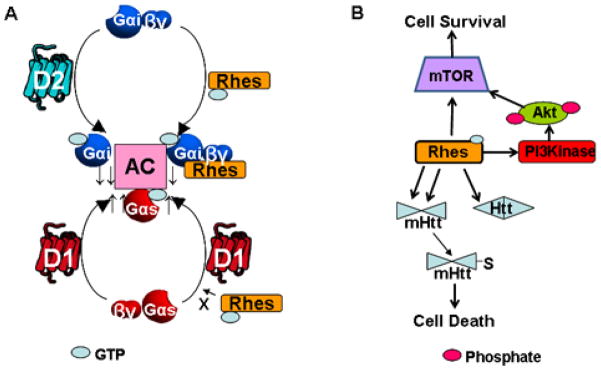Figure 2.
Schematic of effects of Rhes on cellular signaling. (A) Working model of Rhes and GPCR signaling. In the absence of Rhes (upper left), dopamine D2 receptors promote activation of Gαi/o and thus inhibition of AC. Rhes itself (upper right) is postulated to activate Gαi/o and also inhibit AC, but to a lesser extent than D2 receptors. As such, it can have a partial agonist-like effects when competing with D2 for Gαi/o. D1 receptors (bottom left) activate Gαs/olf to provide robust stimulation of AC. Rhes is hypothesized to inhibit this effect in two ways: by decreasing the ability of D1 to activate Gαs/olf (bottom right) and by providing increased inhibitory tone on AC through its interaction with a Gαi/o heterotrimer (upper right). (B) Rhes can affect the balance of cell survival and death through interaction with huntingtin and other proteins in striatum. By activating mTOR either by direct binding or through its ability to bind to PI3 kinase, Rhes can promote cell survival. However, by binding to mHtt more readily than to wild type Htt, Rhes can promote cell death both by causing sumoylation and solubility of mHtt and by being sequestered and prevented from binding to mTOR.

